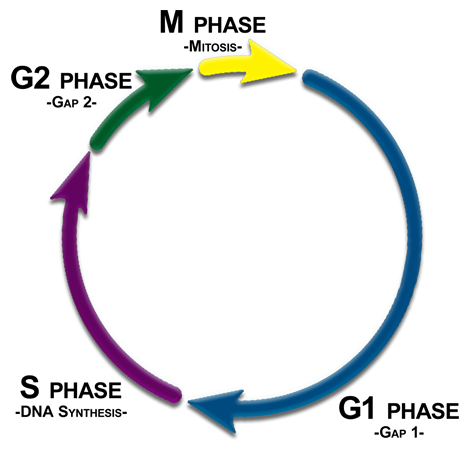Chromosome Structure
During the process of cell division, DNA is packed into chromosomes that move inside the cell in a highly organized manner. First, chromosomes migrate to the center of the cell, then the sister chromatids of each chromosome move to opposite poles in the cell. This movement is a crucial part of each daughter cell receiving the same subset of genes.
Each of the two sister chromatids has a narrower point called the centromere. On top of the centromere (on the outer face of the sister chromatids) is a protein complex called a kinetochore. The kinetochore is a complex structure containing many different proteins, including small motor proteins. The kinetochore is where spindle fibers attach.
Stages of the Cell Cycle
The process of cell division involves an ordered series of phases called the cell cycle. The cell cycle is divided into two vastly unequal periods, a growing phase, or interphase, and the mitotic phase, where the actual cell division takes place. Interphase is composed of these three stages:
- The Gap 1 phase (G1) - During G1, the cell increases in size and duplicates many organelles.
- The S phase - During S phase, which stands for synthesis, DNA replication, (or synthesis), occurs.
- The Gap 2 phase (G2) - During G2, many of the raw materials necessary for cell division are produced.

Figure 1. Phases of the cell cycle - Interphase consists of G1 or Gap 1 phase (blue), S or DNA synthesis phase (purple) and G2 or Gap 2 phase (green). The M phase (yellow) is the portion of the cell cycle where mitosis occurs.